If you reside close to the forests, your garden might be at risk of deer invasion. But incorporating deer-resistant annuals will keep them from invading your backyard!
Read on to find out some of the best choices of annuals that will decorate your garden and effectively keep deer away.
Table of Contents Show
Is Petunia A Deer Resistant Annual?
No, Petunias are not deer resistant.
These popular flowering succulents are abundant in many warm regions, home to white-tailed deer, mule deer, and black-tailed deer.
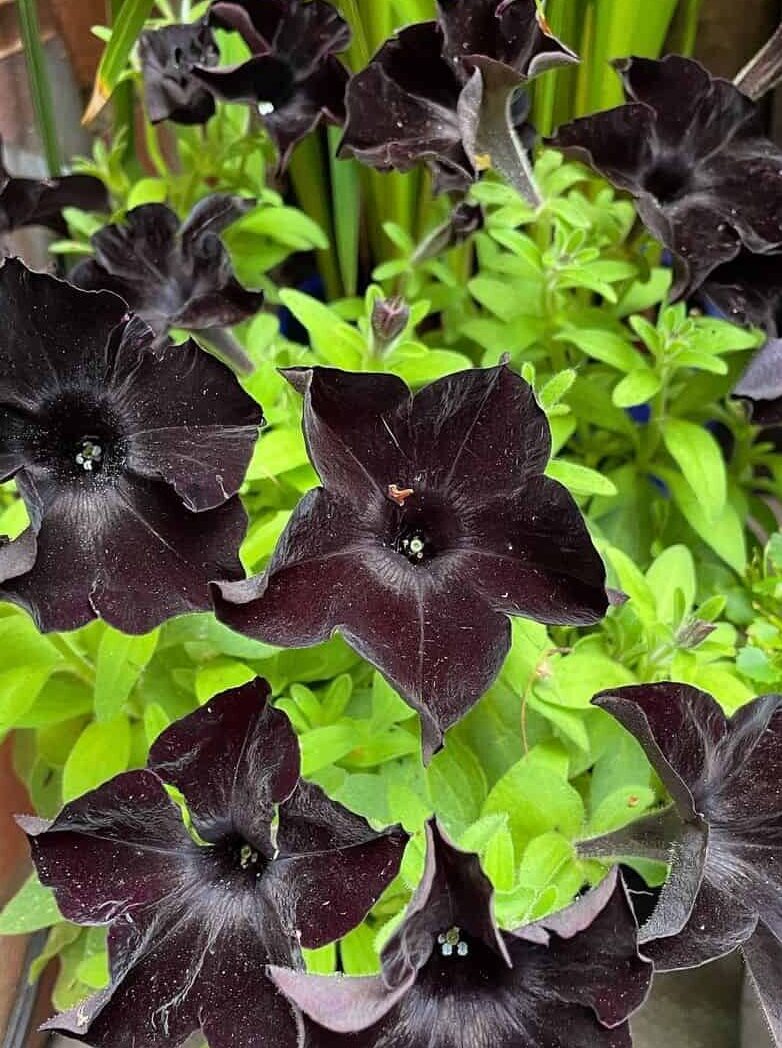
Unfortunately, deer may find Petunias delicious enough to devour, especially in spring when the flowers bloom.
The Petunia blossoms and stems are incredibly moist, which may entice deer to munch on them.
However, you can quickly prevent it by growing them at higher heights or surrounding them with deer-resistant annuals.
10+ Deer-Resistant Annuals List
Remember, deer would munch on anything that may look green and fleshy.
Therefore, the key is to grow deer-resistant annuals that will keep the animal away using smell, taste, or toxins.
Here are a few deer-resistant plants based on their USDA zone, growth habits, and flowering behavior.
1. Floss Flower
Floss flower (Ageratum haustonianum) annually produces clusters of lavender-blue blossoms every spring until fall.
However, they may also come in various colors, ranging from blue, pink, white, and purple blossoms with a toothed set of leaves.
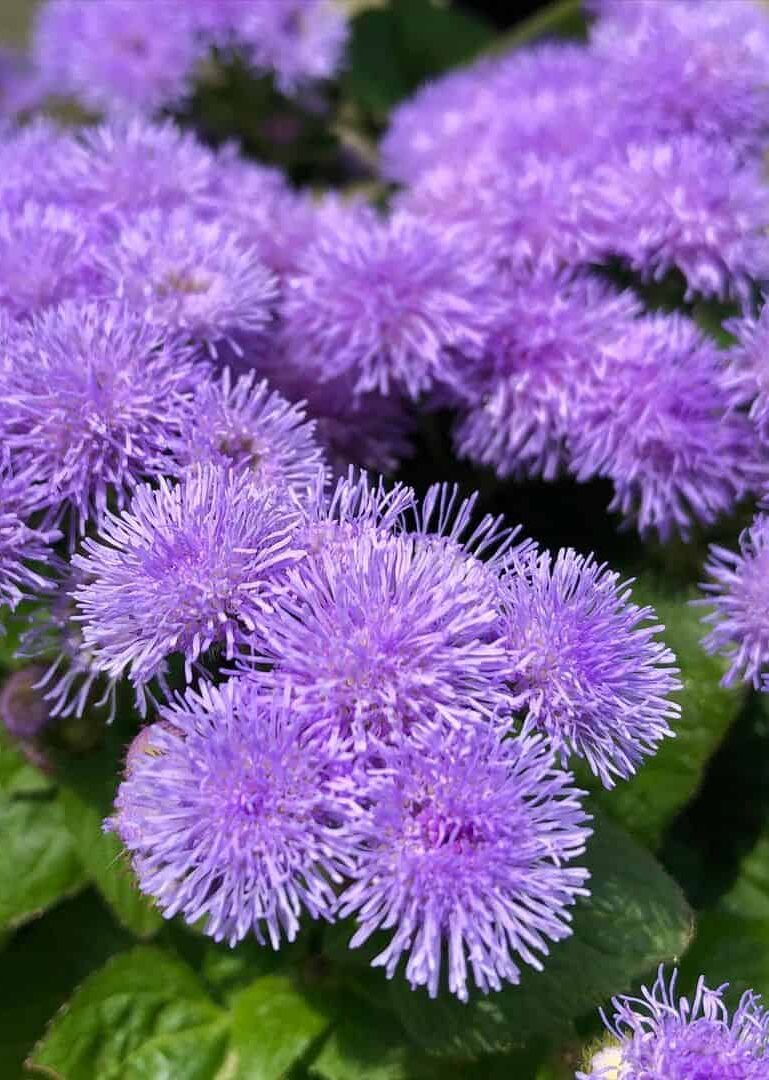
Floss plants beget deer-resistant flowers due to their bright blooms and delightful scent.
They are best suited for a warm climate, usually in USDA zone 10 to 11.
2. Polka Dot Plant
As the name suggests, Polka Dot (Hypoestes phyllostachys) boasts tiny, brightly variegated leaves that look eye-catching.
Similarly, foraging animals like deer and rabbits will find these plants overwhelming and avoid feeding on them.
According to the research done by Cornell University, Polka Dot plants are “non-invasive, non-aggressive, and deer resistant.”
It is often grown as an annual outdoor plant or perennial in temperate to warm regions such as zones 10 to 11.
3. Dusty Miller
Dusty Miller (Senecio cineraria), also known as silver dust, is an annual bedding plant that will decorate your garden edges.
Deer may find munching on its leaves unappetizing; therefore, they are best grown on the garden edges to repel the animals.
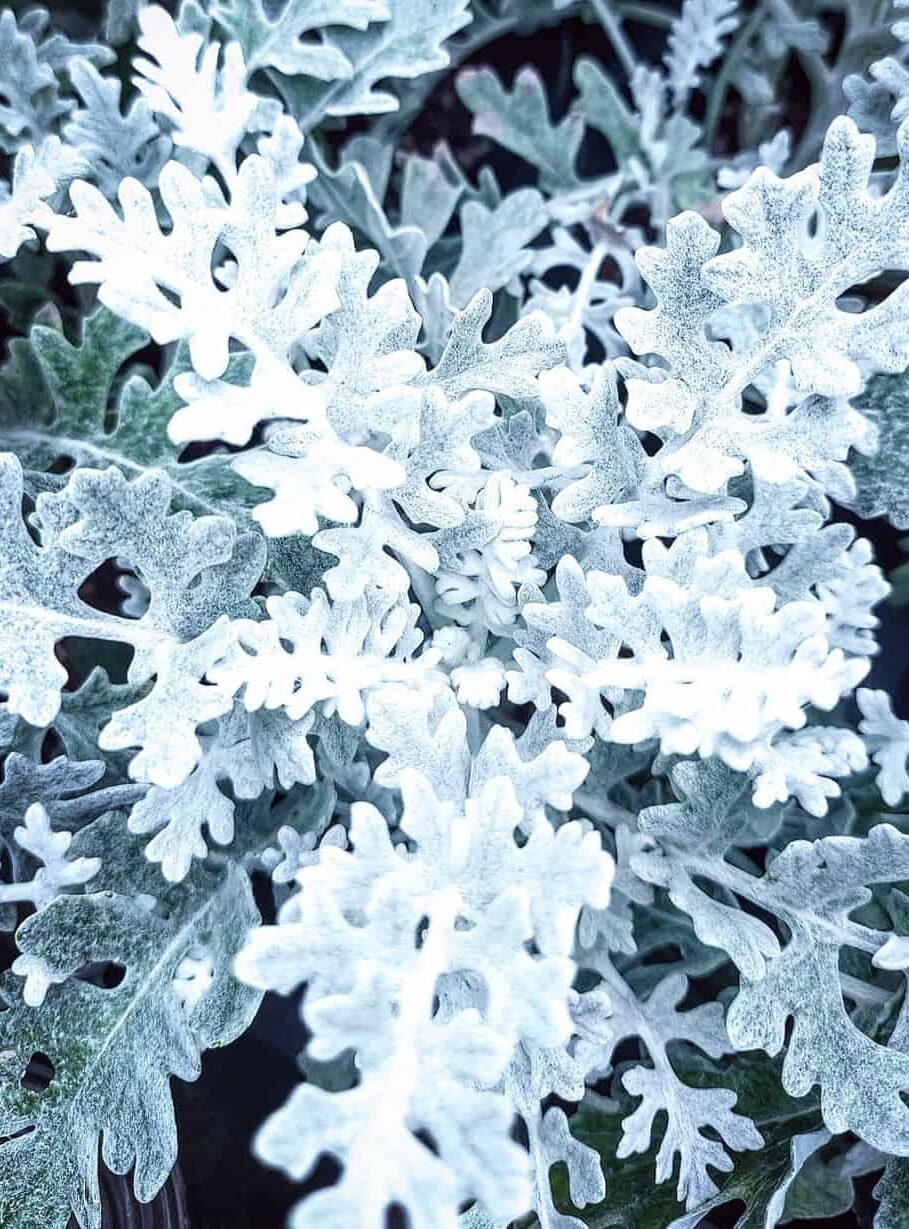
Dusty Miller is mainly grown for its silvery-gray foliage, which has a felt-like coating that keeps deer away.
If you are wondering, it thrives in USDA zones 8 to 11 with a warm temperature and full sun or partial shade.
4. Wax Begonia
Wax Begonia is a common bedding plant used in garden landscaping.
Moreover, it boasts fuzzy or waxy stems with ever-blooming pink, red, or white flowers.
The small-leafed Begonia can easily be plucked right off the ground by deer.
5. Sweet Alyssum
Sweet Alyssum (Lobularia maritima), also called Sweet Alison, is a common flowering annual that beautifies your garden.
It boasts low-growing stature with tons of tiny blooms colored in white, pink, and purple, mainly used to cover the garden.
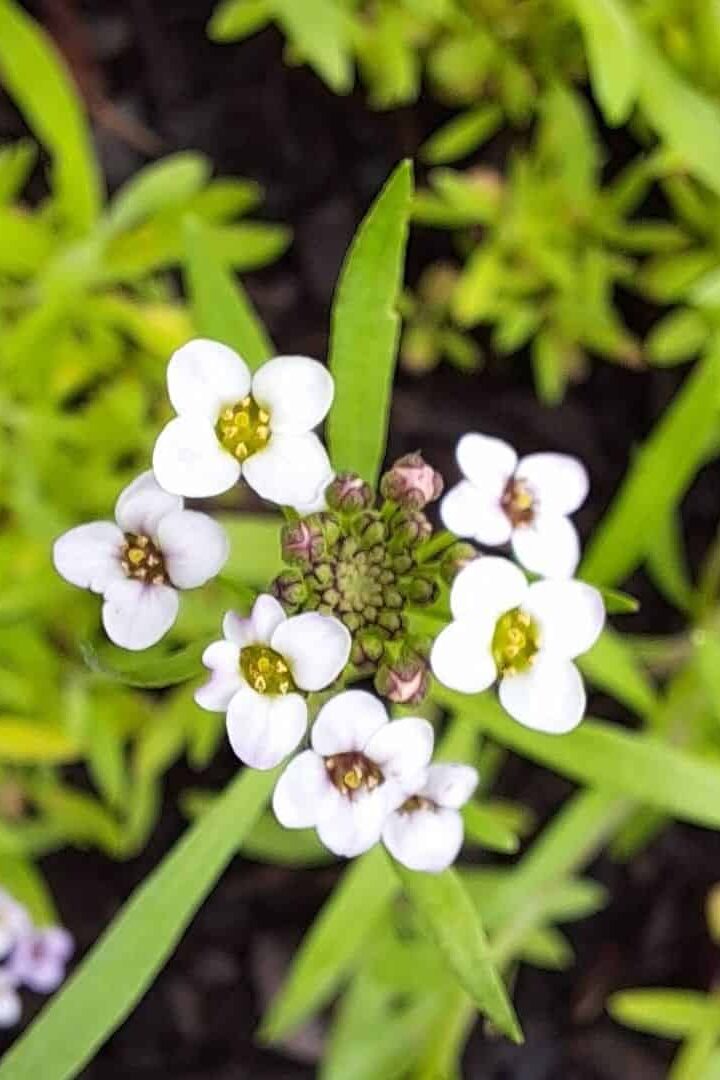
The colorful blossoms and fragrant scent of Sweet Alyssum will help keep deer from entering the garden and nibbling on other plants.
It thrives in USDA zones 5 to 9 with a temperate climate.
6. Sweet Basil
Sweet Basil is a herbaceous plant mainly used as a culinary herb and grown outdoors in full sun.
So, this can be grown around the garden before spring to yield delicious basil leaves for the kitchen.
Deers do not feed on Sweet basil because of its pungent smell.
7. Spider Flower
Spider Flower (Cleome spp.) is an annual flowering shrub that will grow as a tall plant with colorful blossoms in white, yellow, magenta, or pink colors.
This flower contains a bioactive compound that helps repel deer and small animals from nibbling.

The plant’s spiky stem and pungent-smelling flowers also make it deer and other predators resistant.
Moreover, you can grow them in the USDA zone from 2 to 11 in full sun and temperate climate.
8. Cosmos Flowers
Cosmos (Cosmos spp.) is one of the annual flowering species originally from the scrublands of Southern USA.
Similarly, it is widely grown in warmer regions for its extensive and daisy-like blossoms.
You can widely plant them in USDA zones 2 to 11 with temperate to warm climates.
9. Mexican Sunflower
Mexican Sunflower (Tithonia rotundifolia) is a rich flowering annual belonging to the Heliantheae family, widely cultivated in Mexico and Southwestern US.
Additionally, you would know them by their brightly colored daisy-like blossoms on thick stems.
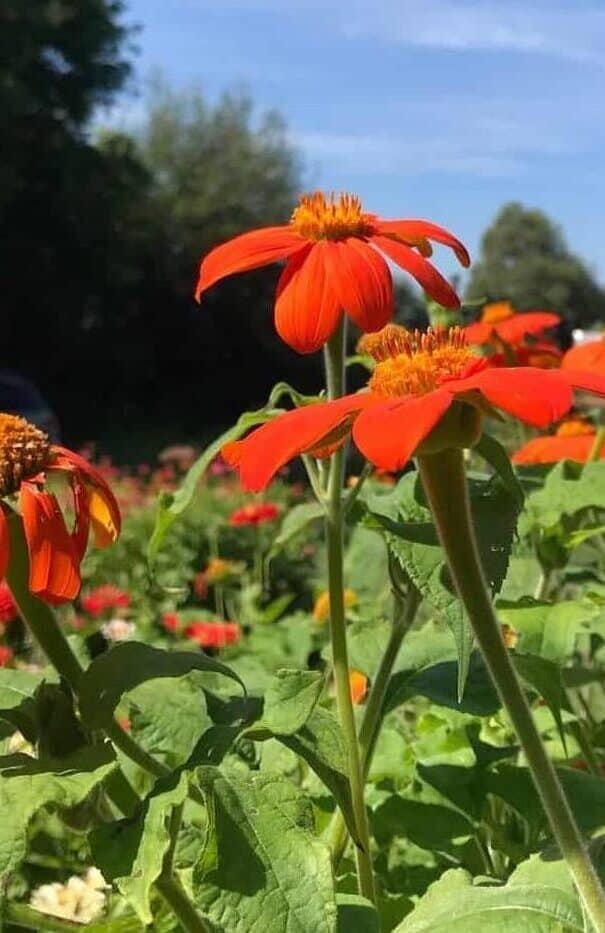
They grow best in USDA zone 2 to 11 with full sun and attract pollinators like bees and hummingbirds.
However, Mexican Sunflowers do not attract deer. The large animals will not fathom these sunny flowers and hairy leaves.
10. Mexican Marigold
Mexican Marigold (Tagetes lemmonii), Lemmon’s Marigold, is an annual flowering native to North America and is seen in USDA zones 8 to 11.
It boasts bright yellow flowers with broad petals that resemble daisies and emits a pungent smell.
The smell is so strong that it repels large predators like deer and harmful bugs like mosquitos and green flies.
Do You Know?
Deers avoid Marigolds due to their pungent smell. And there are several Marigold varieties that you can plant around your garden bed to protect your backyard produce.
11. Nasturtium
Nasturtium (Tropaeolum majus) is an annual flowering species known for its peppery-tasting flower and leaves.
New Jersey Agricultural Experiment Station considers them moderately deer-resistant plants.
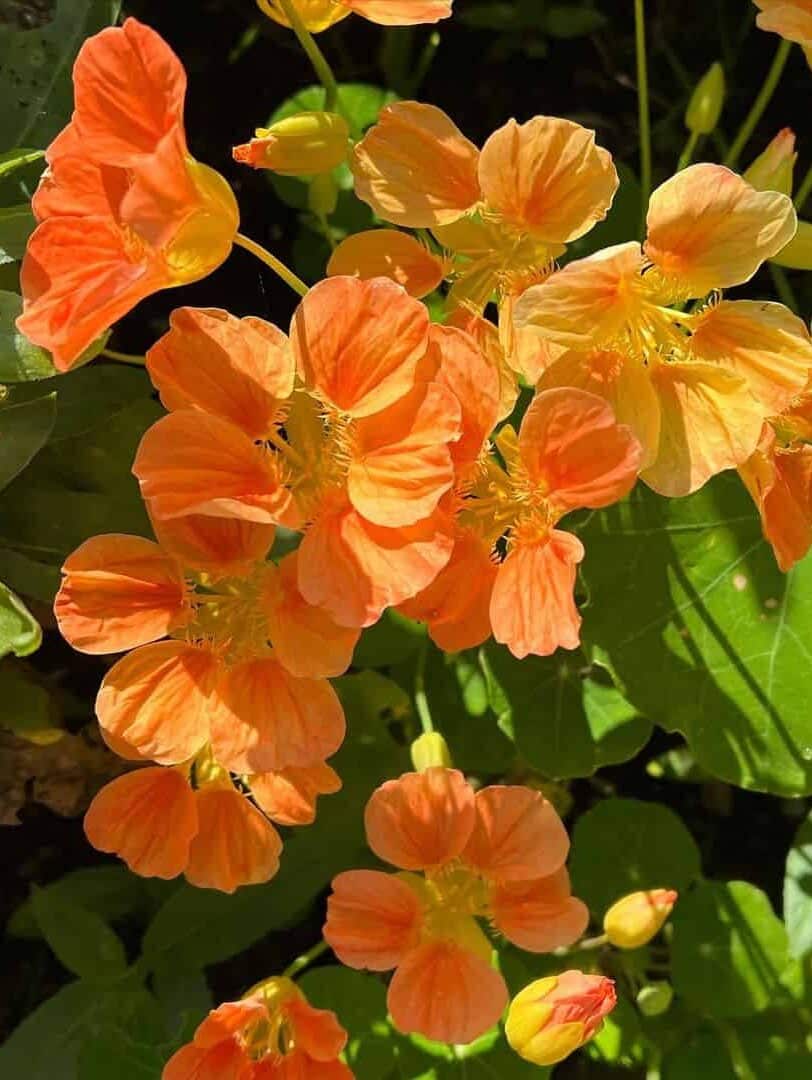
Nasturtium also emits a musky scent in mustard flavor, which will repel deer and small animals.
Additionally, Nasturtium is among the few deer-resistant shade flowers and plants that can fit perfectly for hanging baskets around your property.
Moreover, they will thrive in USDA zones 2 to 11.
12. Dahlia
Garden Dahlia is a beautiful flowering annual bush that brightens up any garden.
Due to the scent of Dahlias, deers typically favor eating other plants over Dahlias.
They grow in USDA zones 8 to 11.
13. Blanket Flower
Blanket Flowers (Gaillardia spp.) are a flowering species that gives out a cluster of richly colored, daisy-like flowers.
The bold Blanket Flower attracts pollinators but repels predators like deer and other wild animals.

These grow in USDA zones of 3 to 10.
14. African Marigold
African Marigold (Tagetes Erecta), also known as Aztec Marigold and cempazúchitl or cempasúchil, is a flowering species native to Mexico.
You can widely grow them in USDA zones 2 to 12 with full sun to attract many different pollinators.
15. Painted Tongue
Painted Tongue (Salpiglossis sinuata) is a lovely flowering annual.
It comes in striking shades of yellow, red, blue, and purple, resembling a painted human tongue.
Deers are not fond of sticky stems, so Painted Tongue’s sticky stems (like those of Mimulus) make it resistant to them.

These flowers attract pollinators and repel animals like deer and rabbits and are often grown in warm regions, particularly in USDA zones 10 or above.
Tips to Protect Plants from Deer
Along with growing deer-repelling annuals, you can try a different method to keep predators away from your plants.
1. Add a Garden Fence or Invisible Nets
Fencing your garden with a strong metal fence will repel deer and small animals that feed on the garden plants.
Consider adding a bunch of straight fences with a height of 8 feet to keep deer away, or attach a black mesh net that will look invisible from far but distracting from the close.
Otherwise, you can introduce a cross-chained fence about 6 feet tall to keep both tall and small animals away.

If you are setting up an electric fence, use a single strand at least 30 inches from the ground.
However, remember to flag it with tape or poly tape to make deer aware before approaching.
2. Use Deer Repelling Products
You can prepare homemade deer repellants or market-brought chemicals to keep the deer away.
Tying clothes with fabric softener, fragrant soap, pepper spray, or a mixture of garlic and egg may help keep deer away.
Otherwise, use deer repellant spray, which can be sprayed around the garden to keep the deer away without damaging the plants.
Pro Tip!
If you forgot to save the seeds of annuals this spring and searching for a way to fend off deer, you can also easily plant a few deer-resistant perennials this spring.
From Editorial Team
Conclusion!
Deer are easily attracted to garden plants because they are easy to scavenge.
Therefore, the key is to make them less exciting or desirable by growing deer-repellant plants or other preventive measures.
Growing deer-repellant plants may be the best option because they are less likely to hamper the deer and other animals physically.
Good Luck!


